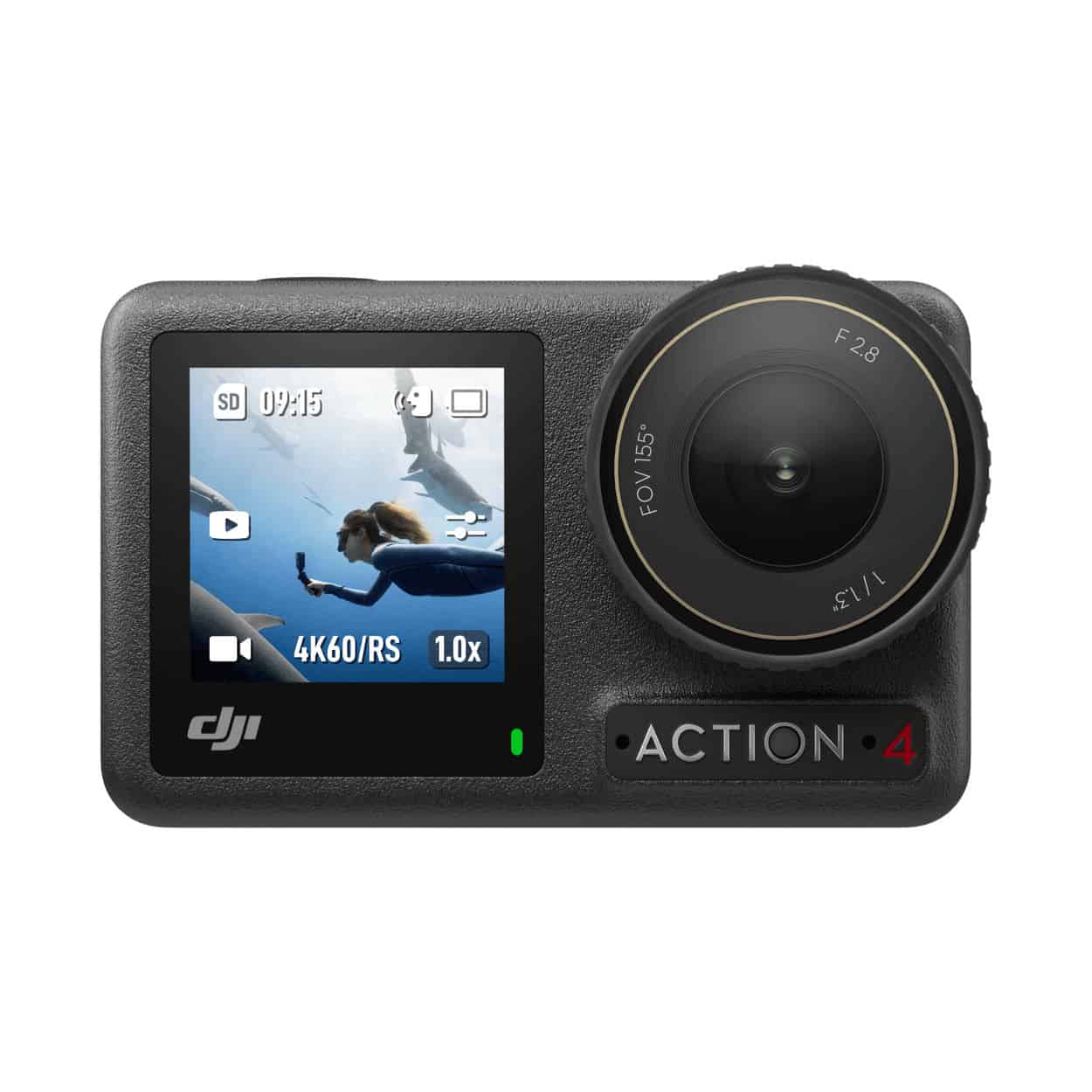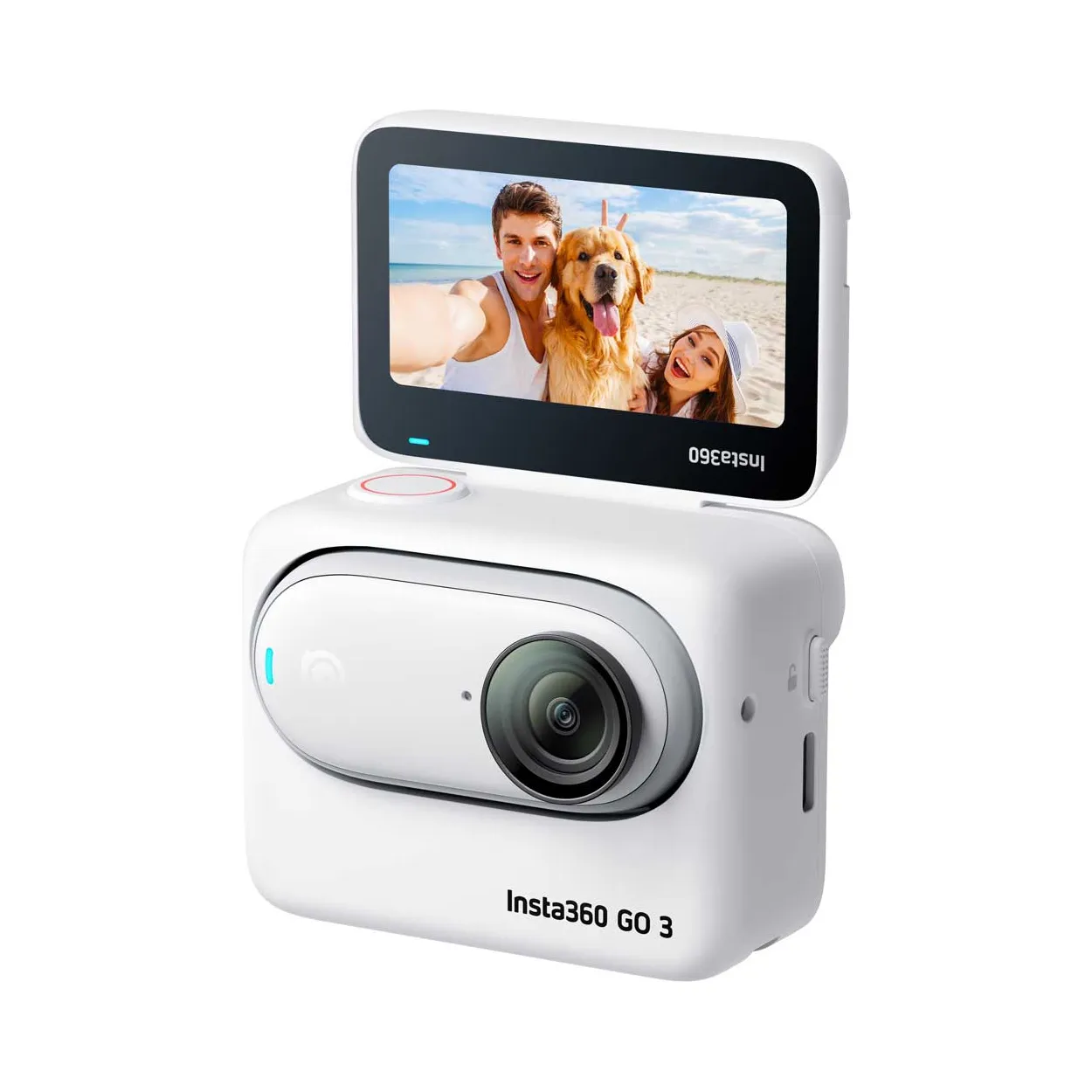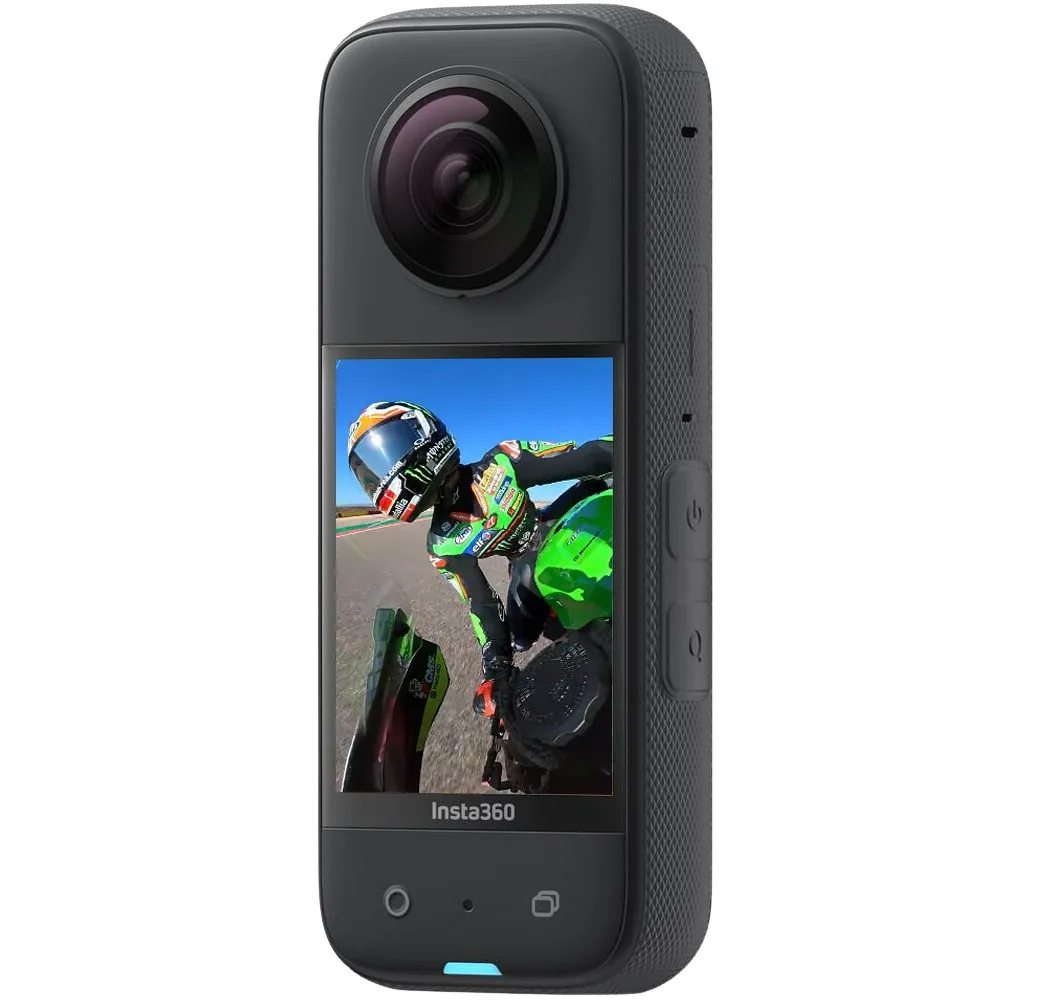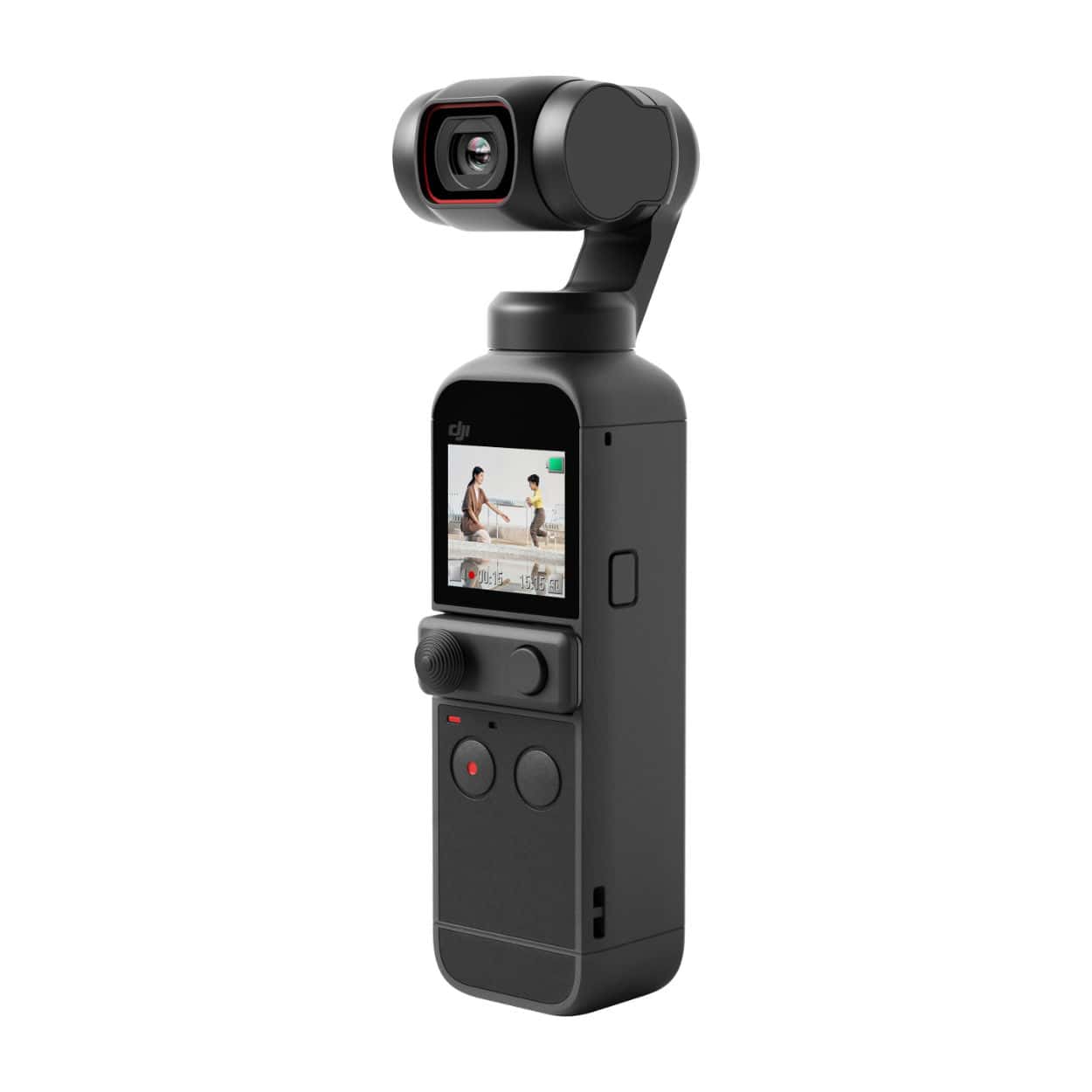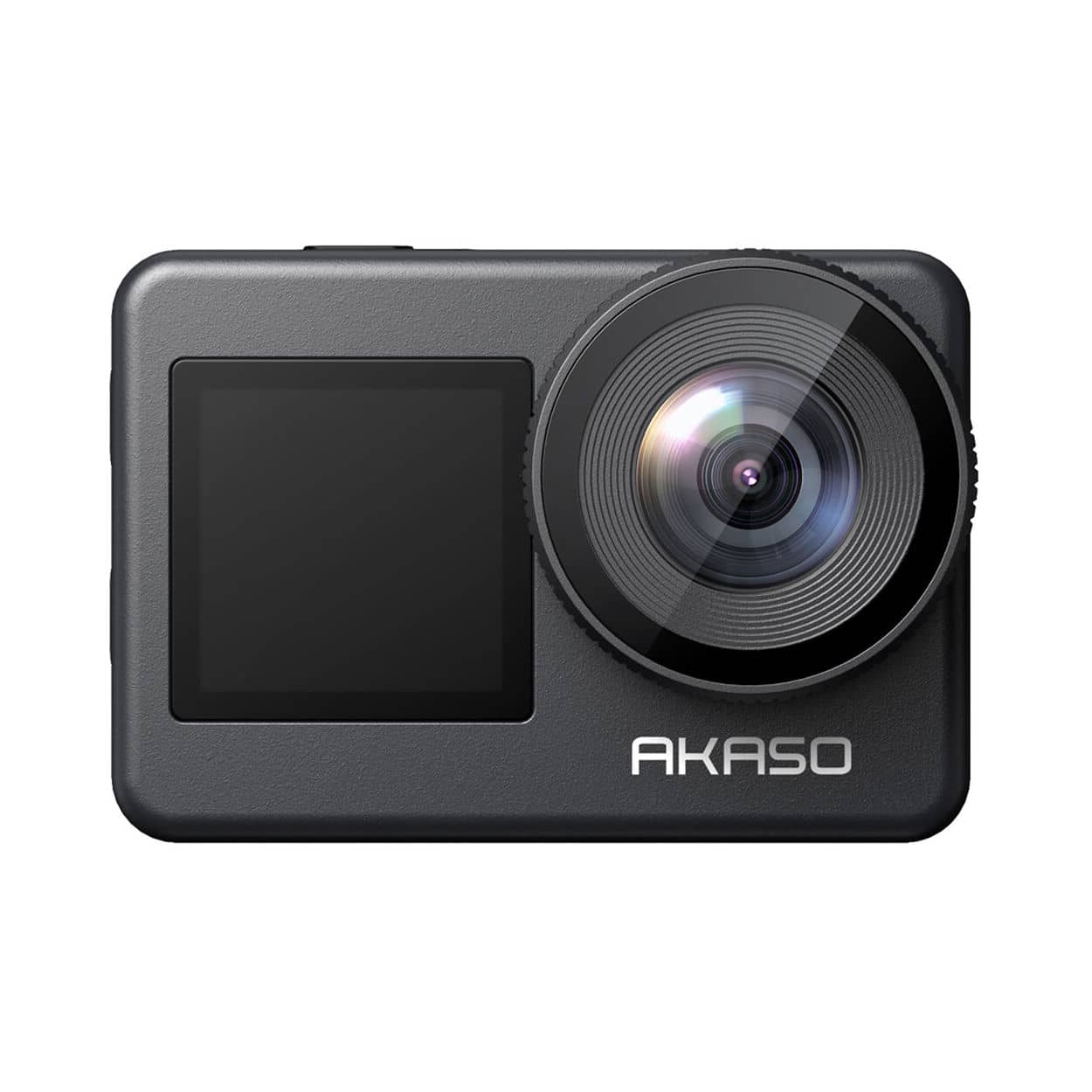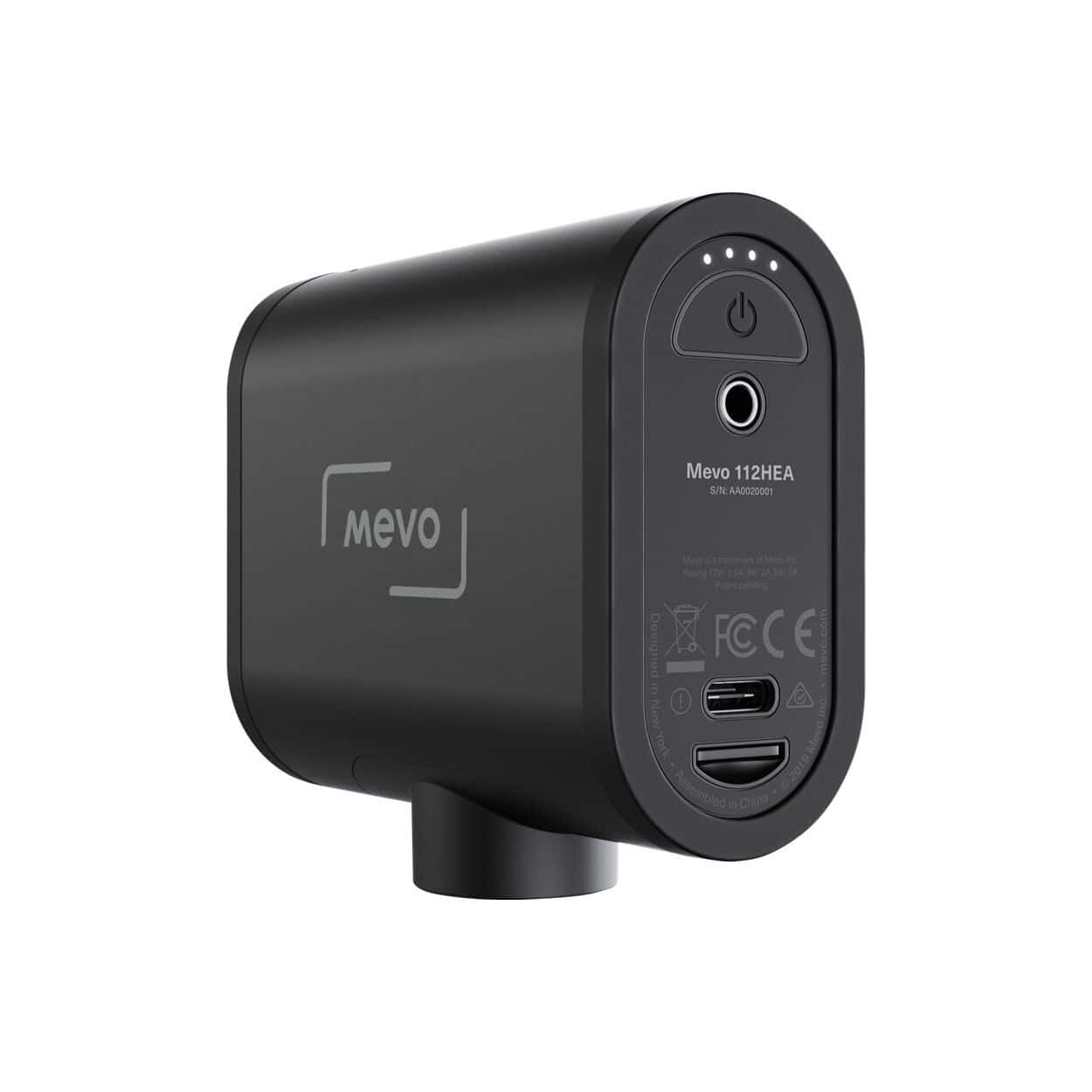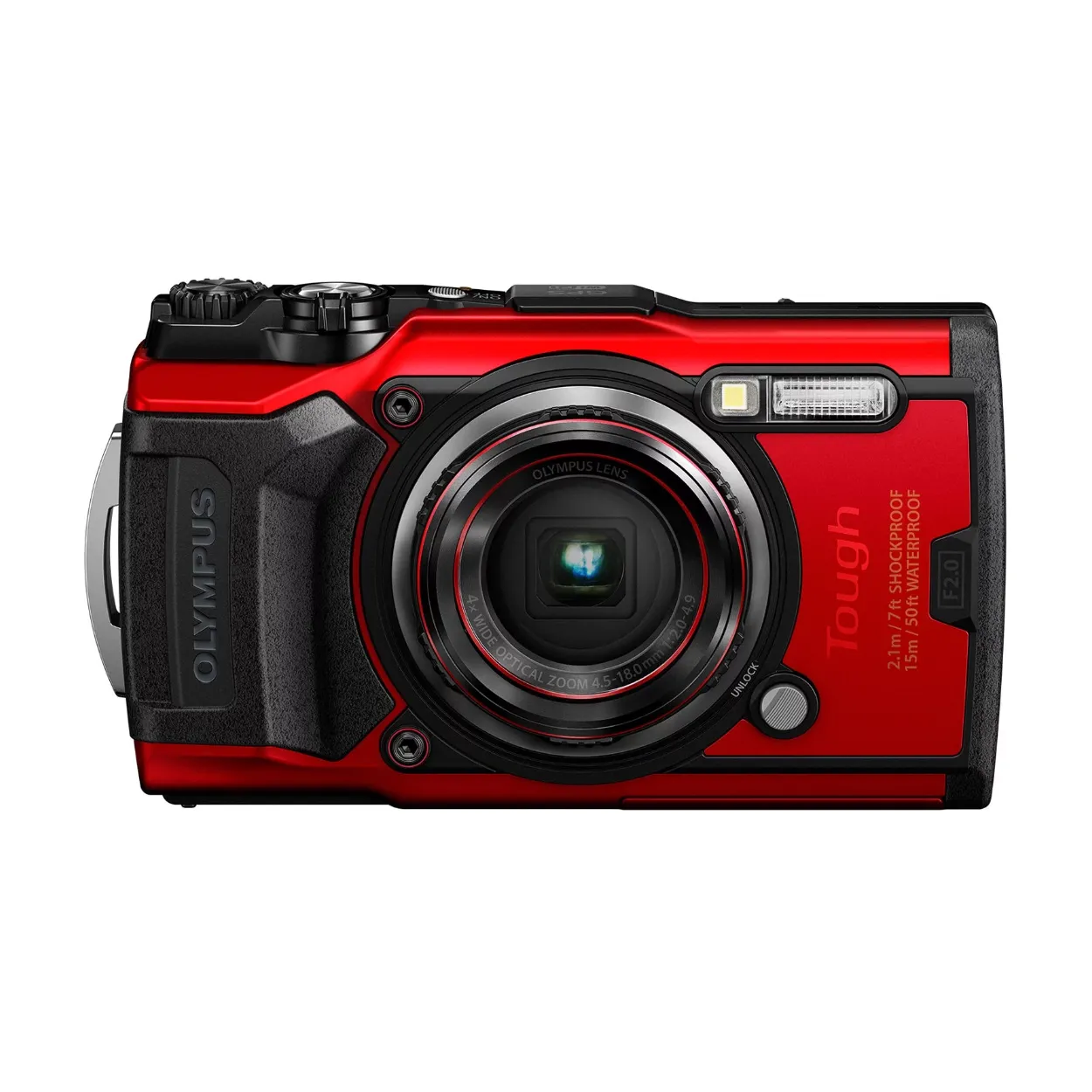In a world seemingly custom-made for adventurers, the ever-increasing need to capture every exhilarating moment is more present than ever.
From the cascading waterfalls in untouched forests to the towering peaks in distant landscapes, your adventures deserve to be chronicled in the highest quality possible.
This is where a reliable action camera steps in, becoming an essential companion for every thrill-seeker and adventurer at heart.
For many, the name GoPro has become synonymous with action cameras, paving the way in capturing high-octane adventures with a clarity and precision that brings viewers right into the heart of the action.
However, with this success came competition.
New entrants in recent years have offered innovations like gimbal stabilization, 360-degree recording, and more. While GoPro continues to adapt, it now grapples with maintaining its lead in an increasingly competitive market.
In this guide, we will dive deep, showcasing 7 action cameras that might just be a better match for your needs than a GoPro.
Four of those seven cameras come from GoPro’s biggest rivals in the action camera segment, DJI and Insta360.
We’ll also present 3 other cameras that might not immediately spring to mind when you think of action cameras or GoPro rivals, but could very well be the ideal camera for your specific needs.
DJI Osmo Action 4
- Beats the GoPro in low light
- Front and rear touchscreens
- Can export gyro data
- Waterproof up to 18m
- Less mature accessory ecosystem than GoPro
- No 5.3K video
The DJI Osmo Action 4 is GoPro’s biggest rival, and because of how closely matched it is with the GoPro HERO 12 Black, choosing between the two is all the more difficult. While the company lacks the brand heritage GoPro enjoys, drone manufacturer DJI has been steadily catching up and has begun to establish itself as a serious contender for the action camera throne.
DJI fans will be quick to point out its 1/1.3-inch sensor size which is bigger than the GoPro HERO 11 and 12’s 1/1.9-inch sensor. This makes it significantly more capable in low-light conditions, an area where almost every other action camera falls short.
Furthermore, the Osmo Action 4 distinguishes itself through unparalleled water resistance. It can adeptly handle water depths up to 18 meters without necessitating any external casing. That’s almost double the 10m/33ft depth rating of the latest GoPros. For those with a penchant for deeper aquatic explorations, employing its protective case allows a remarkable dive of up to 60 meters.
Another key difference is the Osmo Action 4’s magnetic attachment system, which many users swear by. It’s definitely more convenient than GoPro’s quick release attachment system, although on the flipside a quick release system does naturally offer more extra security.
Given that the DJI Osmo Action 4 occupies the same price bracket as the GoPro HERO 12 and doesn’t do anything to really set itself apart from the GoPro, the Osmo Action 4 hasn’t quite landed the killing blow it might have hoped to.
The GoPro still benefits from a more mature ecosystem of accessories, and has some wins of its own, spec-wise.
Nevertheless, the Osmo Action 4 is definitely a formidable competitor, and the argument as to which is better will go on until the next refresh of both models.
Insta360 Go 3
- Tons of placement possibilities
- Stabilized 2.7K video
- Two mics produce good audio recordings
- Action Pod with 2.2" flip touchscreen for remote viewing
- Lacks 4K
- No storage expansion slot
The Insta360 GO 3 is an innovative wearable camera tailored for those looking to capture unique, hands-free perspectives. While it doesn’t match the newest GoPro in raw camera specs, it’s not trying to either.
Instead, the Go 3 is a tiny action camera that fits in the smallest of places. That includes your own mouth, the bottom of a glass, or the driver’s seat… of an RC car.
Furthermore, the back of the Go 3 is magnetic, meaning it’ll snap onto metal surfaces, making it incredibly easy to find places to mount it to. The box also includes various attachment accessories, including a neck strap that is worn underneath your shirt so that the Go 3 can be used as a wearable camera.
Central to the Go 3’s design is the accompanying Action Pod, which the Go 3 slots into for charging. When combined, the Go 3 functions more like a traditional action cam, but take it out and the Action Pod becomes a nifty monitor for remote viewing. Just note that the action pod itself is only IPX4 water resistant unlike the Go 3 itself, and that there’s a limit to the range of wireless remote viewing.
While it lacks 4K recording, the stabilized 2.7K footage it can film should be more than enough for the vast majority of users. The image quality in daylight is good, and the microphone quality surprised us given the size of the camera.
Overall, the Go 3 is just a lot of fun to use and the placement flexibility allows you to get seriously creative with your shots. It can’t match the GoPro at what the GoPro is designed to do, but it’s got its very own identity—and that’s what makes it a particularly interesting alternative to consider.
Insta360 X3
- 5.7K30 HDR video
- Great editing software
- Long battery life
- Shoots 72MP spherical images
- Must process videos before editing
- Slight learning curve to edit 360-degree footage
The Insta360 X3 is an interesting addition in the evolving landscape of action cameras, offering a versatile alternative to conventional GoPros. This camera seamlessly integrates 360-degree video capture and traditional action capturing, catering primarily to 360-video enthusiasts who sometimes venture into straightforward action footage shooting.
The X3 has retained the same video specifications as its predecessor, the X2, boasting a raw video capture ability of 5.7K at 30 frames per second in 360 mode. However, it improves upon the X2 with a larger 48-megapixel sensor and a brighter lens, which enhances video output considerably.
The camera’s new dual-mode lens system is especially nice to have, enabling users to alternate between shooting 360 videos or traditional 4K videos effortlessly. While the frame rate in the single lens mode is capped at 4K@30fps, it nevertheless parallels a competent 4K action camera, making it a seriously versatile piece of equipment.
Beyond videos, the X3 also excels in capturing spherical still images with a resolution of 72 megapixels, opening avenues for immersive photography experiences. Coupled with the Insta360 app, users can further animate these images into captivating panning videos.
The X3 presents a user-friendly interface, featuring more physical buttons, a larger and brighter screen, and improved waterproof capabilities up to a depth of 33 feet. Despite being slightly heavier due to the inclusion of a new 1800-mAh battery, it maintains a comfortable grip, even when mounted on a selfie stick. Its FlowState stabilization system remains comparable to market leaders, including GoPro, though users might notice minor shimmers in 360 footage.
An important point to remember is that while the X3 impresses with its 5.7K video resolution, this is over an entire spherical scene, so you can’t really take the figure at face value. Also, when you pick the frame and export it to a flat, non spherical video, you’re left with 1080p video, so keep that in mind when you’re shooting in 360-degree mode.
The Insta360 X3 is not a direct GoPro substitute but carves its niche as a noteworthy alternative for 360-video enthusiasts keen to explore action footage capturing. There is also of course GoPro’s own GoPro Max 360-degree camera, but as it stands GoPro has some serious catching up to do in this segment.
DJI Pocket 2
- Great for handheld recording
- 3-axis gimbal stabilization
- Excellent object and face tracking
- Not water resistant
- Mediocre low-light performance
The DJI Pocket 2 combines a gimbal and camera, meaning you get gimbal stabilization without the need for a separate gimbal. This results in superior stabilization compared to any built-in electronic image stabilization (EIS) or optical image stabilization (OIS) you’ll find on other cameras.
Despite its unassuming compact size, it delivers clear 4K footage, with higher frame rates at lower resolutions for slow-motion recordings. The design itself lends itself especially well to handheld shooting, since you have a whole grip to hold onto, which is far more comfortable than clasping a GoPro with three fingers.
DJI also recognizes the diverse requirements of content creators, as demonstrated by the extensive range of accessories. Whether one aims to boost audio precision with a wireless microphone, broaden their visual perspective using a wide-angle lens, or establish a flawless stationary frame using a tripod, the Pocket 2 provides a highly customizable experience.
Battery longevity is crucial for creators constantly on the move, and the DJI Pocket 2 doesn’t disappoint in this regard. Offering a substantial 140-minute recording duration, it provides vloggers with sufficient time to document their activities without the constant concern of recharging.
Nevertheless, it’s crucial to underscore the Pocket 2’s constraints. A notable limitation is the device’s susceptibility to water damage. While a dedicated waterproof casing is available for underwater endeavors, the camera itself isn’t inherently water-resistant. Neither is it particularly rugged in design. This can be problematic for vloggers frequently navigating unpredictable conditions, and as such, the Pocket 2 isn’t really suited for intense action.
There are also a few other issues like overheating leading to limited clip length, a somewhat muted default color profile, and poor performance in low-light scenarios. However, these are fairly small issues in the grand scheme of things, and overall the DJI Pocket 2 is a fantastic vlogger cam for taking out and about with minimal hassle.
AKASO Brave 7 LE
- Cheap
- Front-facing screen unlike most budget action cams
- Comes with many accessories
- No voice control
- Clunky menus
- Not waterproof without housing
AKASO has made a name for itself as the leader in producing ‘affordable’ GoPro-like action cameras, and the Brave 7 LE is one of their offerings which manages to include premium features from the GoPro, while still costing a fraction of the price.
A highlight of the Brave 7 LE is its advanced 6-axis image stabilization, which budget-oriented off-brand GoPros typically lack. Achieving fluid footage amidst dynamic activities can be challenging, but with its enhanced EIS mechanism, the camera provides a good level of stabilization. This ensures that scenes, from rugged trails to choppy waters, are captured with minimal shakes and jitters. That being said, it’s still not comparable to the likes of the more sophisticated GoPro Hypersmooth, DJI RockSteady or Insta360 FlowState technologies.
For those who prefer to manage and view their footage on broader platforms, the AKASO Go application provides a streamlined interface for smartphone integration. Furthermore, the integration of an HDMI port allows for direct connection to larger displays, elevating the playback experience.
On the durability front, the camera’s IPX7 water-resistant construction underscores its ability to withstand elemental challenges, making it adept at handling light water exposures. However, it’s worth noting that its full underwater potential is realized only when encased in its specific protective shell (included in box).
Despite its merits, the Brave 7 LE does have its set of challenges. Enthusiasts seeking higher cinematic frame rates might find the camera’s offerings a tad limiting. Moreover, the visual quality, even in optimal lighting conditions, might not consistently meet expectations. Although the stabilization is a key feature, it comes at the expense of a noticeable 1.6x crop factor, which could be a concern for some.
In terms of added benefits, the package boasts an array of accessories, inclusive of a sturdy protective case and an integrated tripod mount. This variety amplifies its utility straight out of the packaging. Additionally, the inclusion of a front-facing display proves invaluable for vloggers, facilitating easier framing and composition.
Logitech Mevo Start
- Vastly streamlined livestreaming setup
- Use up to 3 Mevo Start cameras together
- Well-designed app
- Only 1080p@30fps
- Mediocre microphone
The Logitech Mevo Start positions itself as an adept solution tailored to contemporary streaming demands, suitable for content producers, educators, and event coordinators. Designed specifically for streaming, its seamless integration with Streamlabs designates it as a centralized tool for multistreaming, enabling users to broadcast concurrently across multiple platforms, thereby expanding their reach.
With a 1080p resolution camera, the Mevo Start can produce broadcasts that are vivid, crisp, and engaging. Its diminutive stature, measuring a mere 3 inches and weighing only 8 ounces, covers a potent streaming capability that’s easily portable. This design emphasizes not only ease of transport but also offers unparalleled versatility within its category.
Its impressive battery life is tailored for extended streaming, marking it as the go-to choice for lectures, workshops, or protracted gaming marathons. For those anxious about battery longevity, its USB-C interface ensures uninterrupted power, guaranteeing consistent streaming. Moreover, the Ethernet power adapter performs a dual function, providing both energy and a dependable internet link.
Although the camera incorporates an integrated microphone suitable for casual broadcasting, its 3.5mm jack permits those aiming for premium audio quality to connect external devices, thereby enriching the auditory experience. This versatility allows it to transition smoothly between spontaneous and more structured broadcasting environments.
In today’s streaming-centric landscape, connectivity is pivotal, and the Mevo Start provides plenty of options. Whether tethering to a distant Wi-Fi source, utilizing mobile data during transit, or employing a direct Ethernet link, the device ensures an unwavering online presence, facilitating continuous audience engagement.
It’s a very different beast from the GoPro, and for those who were considering an action camera for live streaming purposes, the Mevo Start is a purpose-built solution that might be a perfect fit for your needs. However, keep in mind that it lacks the versatility of an action camera, and the video fidelity of recordings doesn’t match that of a GoPro or similar.
Olympus TG-6
- Great for macro photography
- Can shoot in RAW
- Internally stacked zoom lens
- Very rugged design
- Not as good as GoPro for video
- No touchscreen
As Olympus’ sixth iteration of their esteemed underwater camera line, the TG-6 embodies the spirit of adventure, seamlessly blending advanced technology with rugged functionality. While marketed for underwater purposes, the TG-6 is also just a solid outdoor point and shoot camera that can take a real beating.
The TG-6 is equipped with a 12MP, 1/2.3-inch BSI-CMOS sensor, which ensures sharp and vibrant images. Complemented by a 25-100mm equivalent F2.0-4.9 stabilized lens, this camera promises clear and detailed shots, whether on land or under the sea. And with a dedicated macro mode, you can take close-up shots that simply aren’t possible on the GoPro.
Its compact design, paired with a tough exterior, is a testament to durability. More than just an aesthetic, the camera offers robust protection against extreme weather and accidental drops. For aquatic adventurers, its advanced waterproof capabilities make it an invaluable asset for deep-sea explorations.
Where accessories are concerned, the TG-6 excels. Offering a range of add-ons, from underwater casings for deeper dives to lens converters and specialized lighting, it allows photographers to tailor their experience. This versatility ensures the TG-6 can tackle any environment and consistently deliver top-tier results.
However, it’s not perfect. The absence of a touch interface, especially in today’s tech landscape, feels like an oversight, although the argument that a touchscreen doesn’t belong on such a rugged body could be made. Moreover, its video performance isn’t up there with high-end action cameras or smartphones. Users should also be wary of the occasional intrusive notifications from its Wi-Fi application.
Buying Considerations
When venturing into the world of videography or looking to upgrade your current camera setup, there are several factors to consider to ensure you make the best purchase for your needs. Given the myriad of options available today, including cameras from brands like Logitech, DJI, AKASO, and Olympus, here’s a guide to help you navigate your buying decision for the cameras mentioned above.
1. Camera Purpose
The right tool always depends on the job, so here are some pointers depending on what you want to use your camera for:
Action and adventure filming
For adrenaline-pumping activities such as extreme sports and diving, consider action-oriented cameras like the DJI Osmo Action 4, Insta360 X3, AKASO Brave 7 LE, or Olympus TG-6. These cameras were designed with such activities in mind.
GoPro has the best accessory availability that makes it the most versatile at handling different situations, but DJI and Insta360 also have a fairly extensive range of first and third-party accessories that mean you will have most situations covered.
Vlogging & Travel
For daily vlogging or travel videos that don’t involve anything too crazy, lifestyle cameras like the DJI Pocket 2 and Insta360 Go 3 are great choices.
The DJI Pocket 2 is a straightforward camera that is easy to use and nice to handle. For the more experimental creators, the Insta360 Go 3 is a slightly more quirky camera that can make for some fun footage.
360° Experiences
Watching traditional flat videos is cool, but reliving memories through all-around immersive 360-degree content is something else. For this, a 360 camera like the Insta360 X3 is needed.
Live Streaming
Livestreaming is a more specific use-case, and while action cameras can technically manage it, the process is surprisingly complex and troublesome.
Logitech’s Mevo Start is purpose-built for real-time audience engagement, and a superior choice to the GoPro or similar.
2. Resolution & Image Quality
The resolution, frame rate, and bitrate are all important factors that determine the clarity and smoothness of videos. While recording in 4K will yield the best picture, many YouTubers prefer to record in 1080p or 1440p/2K for various reasons.
The file sizes of 4K eats through storage quickly, and render times become significantly longer. Most devices can generally record lower resolution content at higher frame rates, which also has advantages. And finally, most viewers don’t consume content 4K content, so it shouldn’t be a priority unless your viewership blows up.
Image quality is more difficult to measure, as simply reading the specs of a camera will not give you a very good idea. Instead, you should watch some real footage taken by the action cameras you’re considering to determine whether they will meet your requirements.
3. Accessory Availability
Thanks to its popularity, GoPro has the most established ecosystem of accessories to choose from, and you can expect more accessories for it to come in the future.
Nowadays, models from other major brands also have extensive accessory options, including underwater gear, mounts, and microphones. But it’s worth double checking to make sure that your chosen camera does indeed offer any accessories you plan to use.
4. Battery Life
Depending on your use, battery life can be crucial. You ideally want to be able to shoot around an hour of footage off a single charge. For longer sessions, you might want to consider options such as spare batteries, or plugging into an external power source while filming.
5. Durability & Waterproofing:
One of GoPro’s key features is its ruggedness. If you’re expecting your camera to take some hits or go underwater, make sure the camera was designed with such instances in mind.
6. Storage Solutions
Depending on your video settings and length, storage is paramount. Most action cameras forego internal memory for expandable storage (usually microSD). However, some cameras like the Insta360 Go 3 feature internal memory instead, like most smartphones.
7. Connectivity
Consider cameras that offer Wi-Fi, Bluetooth, and maybe even GPS. These features make it easier to transfer files, control the camera remotely, or geotag your adventures.

